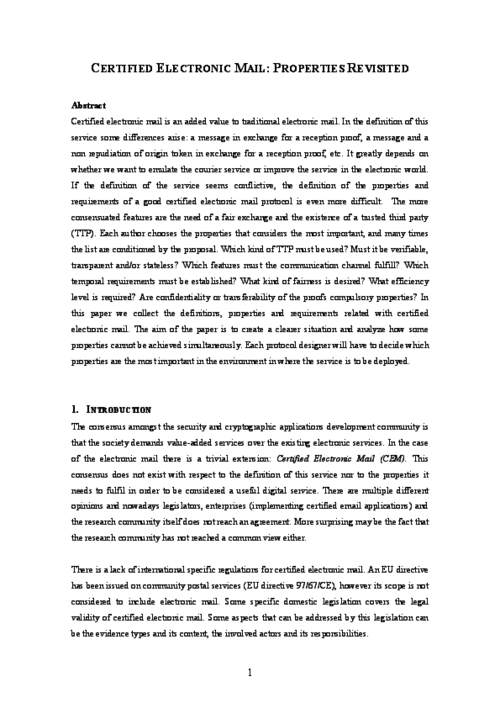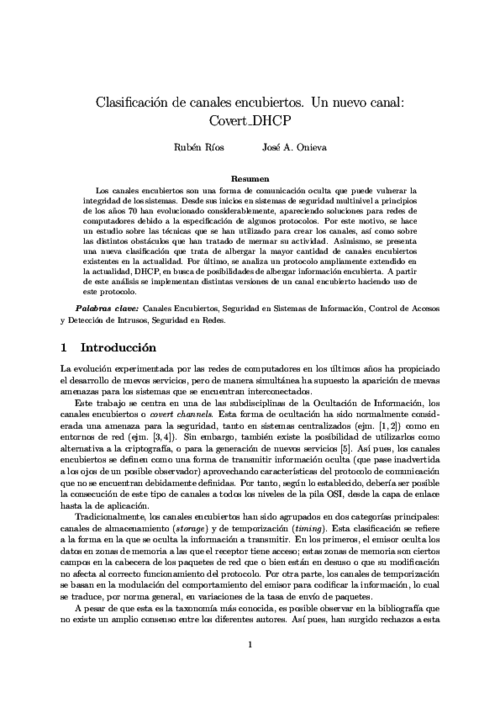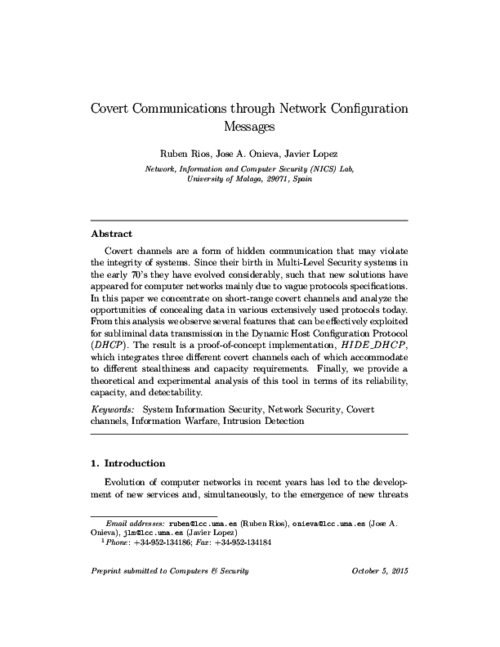 ] Type Year
] Type Year XVII Reunión Española sobre Criptología y Seguridad de la Información, pp. 168-173, 11/2022.

Computers & Security, vol. 29, no. 2, pp. 167 - 179, 2010. DOI
Abstract
Certified electronic mail is an added value to traditional electronic mail. In the definition of this service some differences arise: a message in exchange for a reception proof, a message and a non repudiation of origin token in exchange for a reception proof, etc. It greatly depends on whether we want to emulate the courier service or improve the service in the electronic world. If the definition of the service seems conflictive, the definition of the properties and requirements of a good certified electronic mail protocol is even more difficult. The more consensuated features are the need of a fair exchange and the existence of a trusted third party (TTP). Each author chooses the properties that considers the most important, and many times the list is conditioned by the proposal. Which kind of TTP must be used? Must it be verifiable, transparent and/or stateless? Which features must the communication channel fulfil? Which temporal requirements must be established? What kind of fairness is desired? What efficiency level is required? Are confidentiality or transferability of the proofs compulsory properties? In this paper we collect the definitions, properties and requirements related with certified electronic mail. The aim of the paper is to create a clearer situation and analyze how some properties cannot be achieved simultaneously. Each protocol designer will have to decide which properties are the most important in the environment in where the service is to be deployed.

X Reunión Española de Criptología y Seguridad de la Información (RECSI’08), L. Hernández Encinas, and A. Martin del Rey Eds., pp. 325-336, Sept., 2008.
Abstract
Los canales encubiertos son una forma de comunicación oculta que puede vulnerar la integridad de los sistemas. Desde sus inicios en sistemas de seguridad multinivel a principios de los años 70 han evolucionado considerablemente, apareciendo soluciones para redes de computadores debido a la especificación de algunos protocolos. Por este motivo, se hace un estudio sobre las técnicas que se han utilizado para crear los canales, así como sobre las distintos obstáculos que han tratado de mermar su actividad. Asimismo, se presenta una nueva clasificación que trata de albergar la mayor cantidad de canales encubiertos existentes en la actualidad. Por último, se analiza un protocolo ampliamente extendido en la actualidad, DHCP, en busca de posibilidades de albergar información encubierta. A partir de este análisis se implementan distintas versiones de un canal encubierto haciendo uso de este protocolo.

XII Reunión Española sobre Criptología y Seguridad de la Información - RECSI 2012, Mondragon, pp. 297-302, Sep 2012.

Computers & Security, vol. 39, Part A, Elsevier, pp. 34 - 46, Nov 2013. DOI
Abstract
Covert channels are a form of hidden communication that may violate the integrity of systems. Since their birth in Multi-Level Security systems in the early 70’s they have evolved considerably, such that new solutions have appeared for computer networks mainly due to vague protocols specifications. In this paper we concentrate on short-range covert channels and analyze the opportunities of concealing data in various extensively used protocols today. From this analysis we observe several features that can be effectively exploited for subliminal data transmission in the Dynamic Host Configuration Protocol (DHCP). The result is a proof-of-concept implementation, HIDE\_DHCP, which integrates three different covert channels each of which accommodate to different stealthiness and capacity requirements. Finally, we provide a theoretical and experimental analysis of this tool in terms of its reliability, capacity, and detectability.
